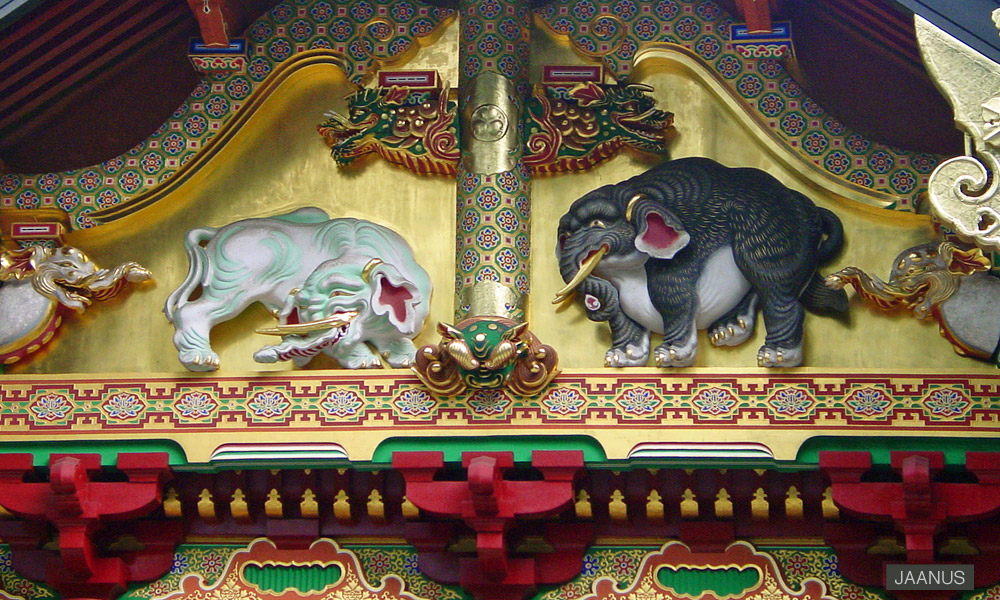| The colours of paint found on Japanese style, *wayou
al, temples. Wooden members were often painted red with *tan
O, and the cut ends were often painted white, *gofun
Σ², or ocher, *oudo ©y. Lattice
windows and stockades were painted green, *rokushou
ΞΒ. However, Zen style *zenshuuyou
T@l, building had unpainted wood surfaces, and this influenced temple architecture
in general from the Kamakura period (13c) on ward. Some exceptions included the
use of black lacquer, kurourushi ½, on buildings, and gold leaf, kinpaku
ΰ, on Rokuonji Kinkaku, ΰt, (1398) in Kyoto. In shrine architecture, uncoloured
timbers were traditionally used in the ancient shinmei style, *shinmei-zukuri
_Ύ’Abut after the introduction of Buddhism in the 5-6th centuries, colours were
applied to shrines, an influence of Buddhist temple architecture. The most lavish
example of toshoku is Toushouguu Ζ{, (early 17c), in Nikkou ϊυ, Tochigi
prefecture, reflecting the popularity of very bright decorative colouring, gokusaishiki
ΙΚF, in the Momoyama period (1568-1615). |



